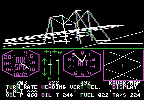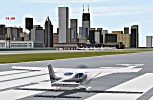When talking about Flight
Simulator you talk about Bruce Artwick. He has most
certainly done a lot of other things, like writing a
classic on computer graphics ("Microcomputer
Displays, Graphics and Animation", 1985). But to
us he is first and foremost the initiator of our
beloved Flight Simulator World.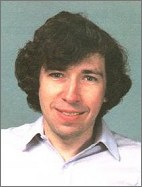
In the mid-70's Bruce Artwick was
an electrical engineering graduate student at the
University of Illinois. Being a passionate pilot, it
was only natural that the principles of flight became
the focus of his master's work. In his thesis of May
1975, called "A versatile computer-generated
dynamic flight display", he presented a model
of the flight of an aircraft, displayed on a computer
screen. He proved that the 6800 processor (the first
available microcomputer) was able to handle both the
arithmetic and the graphic display, needed for
real-time flight simulation. In short: the first
Flight Simulator was born.
In 1978 Bruce Artwick, together
with Stu Moment, founded his own software company by
the name of SubLOGIC and started developing graphic
software for the 6800, 6502, 8080 and other
processors. In 1979 he decided to take the model from
his thesis one step further and developed the first
Flight Simulator program for the Apple-II (based on
the 6502 processor), followed shortly by a version for
the Radio Shack TRS-80. Both versions completely coded
in their respective machine-code. In January 1980
SubLOGIC FS1 hit the consumer market (see ad). By 1981
Flight Simulator was reportedly the best selling title
for the Apple. By the end of 1997 Microsoft claimed to
have sold not less than 10 million copies of all
versions of FS, making it the best sold software title
in the entertainment sector. And in 2000 Microsoft
Flight Simulator was taken up in the Guinness Book of
Records with 21 million copies sold per June 1999. We
certainly owe one to Bruce Artwick.
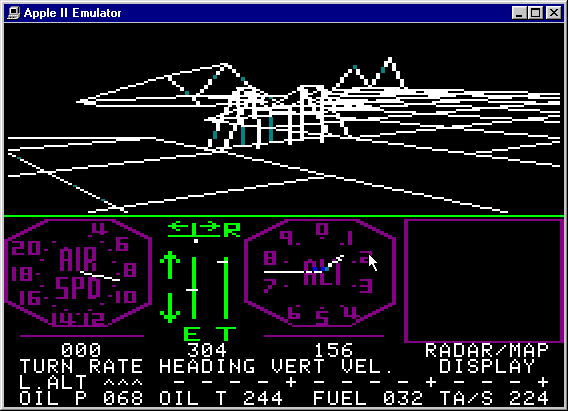
His work didn't go unnoticed.
Another nerd from Redmond had just set up his own
small software company called Microsoft and was
shifting his attention from the C64 to the newly
developed IBM-PC. This fellow Gates entered a bidding
war with IBM to obtain a license for FS. Microsoft won
the courtship because as Artwick said: "its nice
small company atmosphere and the genuine interest of
Vern Raburn, head of the consumer products
division". So Microsoft obtained a joint license
with Bruce Artwick.
In November 1982 Microsoft Flight
Simulator 1.01 hit the stores as one of the first PC
entertainment titles, shortly after followed by
version 2. MS-FS featured a new and sophisticated
co-ordinate system for the FS-world, developed by
Bruce Artwick. And as with all subsequent releases
this first version already demanded so much from
computer resources that people had to run to the
computer stores to buy bigger and faster machines,
primarily for the sake of running Flight Simulator.
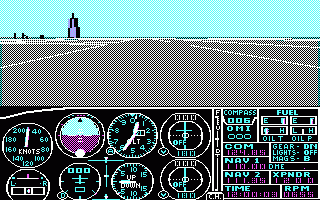
When looking from a distance this
version already has a marked resemblance in structure
with even the latest versions. The next few years saw
a continuing of new releases. See the release history,
from
Microsoft
Knowledge Base.
In the next years SubLOGIC itself
first released a parallel line in the form of a new
version FS II for the Apple II (1984), which itself
was in improved version of Microsoft Flight Simulator
2, made possible by the superior color display of the
Apple. Between 1984 and 1987 another 14 versions or
releases followed for a lot of different personal
computers, notably the Commodore 64 and Amiga, Atari
800 and ST and Apple MacIntosh.
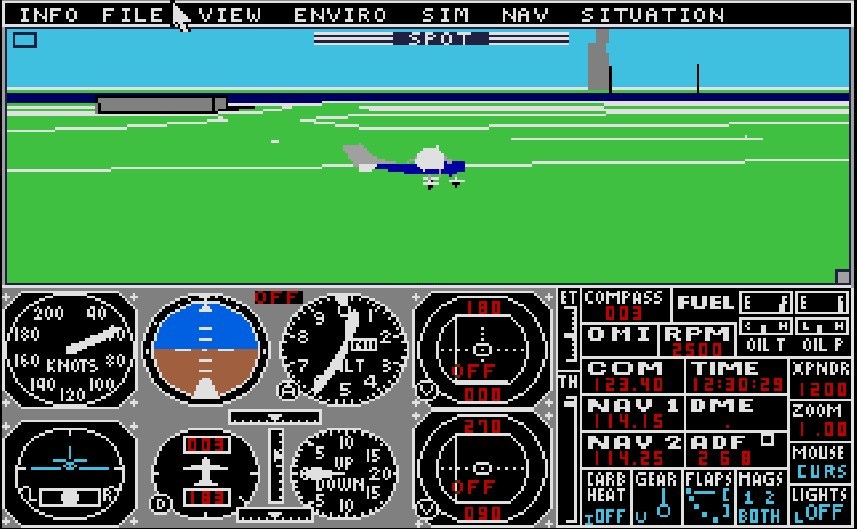
In 1988 Bruce Artwick split with
Stu Moment, left SubLOGIC and started his own company:
BAO Ltd (Bruce Artwick Organisation), solely for the
purpose of developing and marketing flightsimulation
products, concentrated on Microsoft Flight Simulator.
Later that year Microsoft FS 3.0 was released, which
featured separate windows and for the first time
(Microsoft FS) allowed the aircraft to be seen from
the outside! The previous releases (1987/88) of FS II
for the Atari ST, Amiga and MacIntosh already showed
most of these features.
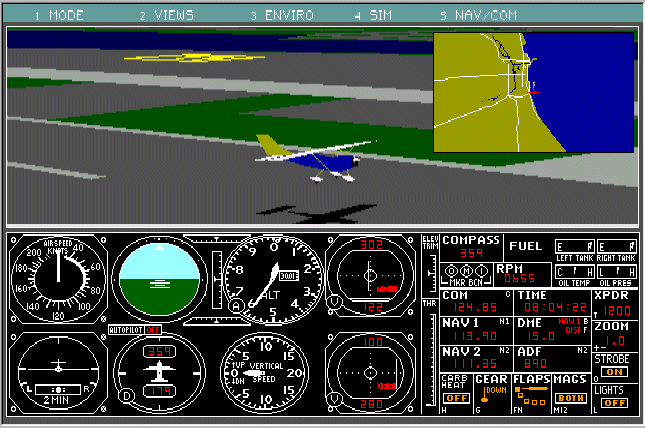
In 1989 this was followed by a
similar, but improved version 4.0, which was released
also as the last version for the Apple Macintosh. A
whole new era started in 1990, when Microsoft for the
first time made a kind of opening in the up till then
hermetically sealed product. This by releasing the
first add-on product in the form of the BAO-developed
Aircraft and Scenery Designer (A&SD), which for
the first time allowed users to generate their own
scenery and aircraft.
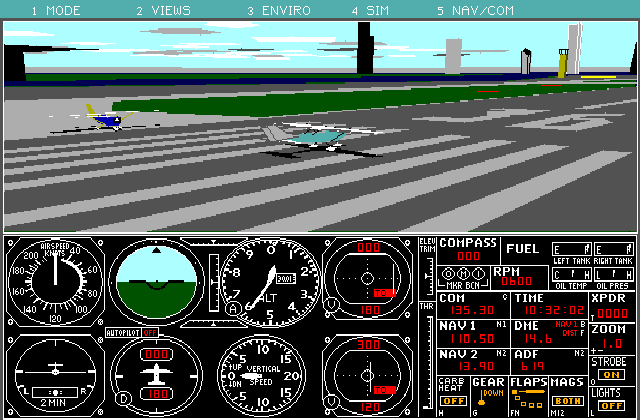
New versions of Flight Simulator
for the PC kept coming from the BAO/Microsoft tandem.
As Bruce Artwick himself once mentioned; "the odd
versions containing the new features and techniques,
the even versions the refinements". Other
companies participated as well, like Microscene that
developed a lot of the standard and add-on scenery for
Microsoft Flight Simulator with BAO as the producer. A
noted example: the very nice Caribbean Scenery.
In 1993 FS 5.0 was released,
containing new scenery based upon a true
world-co-ordinate system (making FS 4.0 scenery
obsolete) and with lots of other new features. In 1995
MS released FS 5.1, the first version on CD-Rom. In
between in 1994 BAO released the add-on scenery
Europe-1, developed by the Alting Brothers from the
Netherlands. And in 1995 the long awaited FLIGHTSHOP
program finally arrived, which started the
ever-continuing stream of new aircraft we still
witness today.
The last version of MS Flight
Simulator developed by Artwick (BAO) was FS for
Windows 95 (FSW95 or FS 6.0 as it is called
internally). According to Artwick, being an
even-numbered release, this would have been a
refinement-release. In fact it can be regarded as
such, as most of its improvements related to better
aircraft-models, better panels, more and
fully-textured scenery, more buildings, bridges etc.
The most interesting thing however was that with the
porting to Windows, frame rates improved with a factor
of 1½, even while the resolution also had been
improved. This was contrary to what was expected by
all the Windows-haters, who remembered the woes of
trying to run Flight Simulator 4 and 5 under Windows
3.11. In one of his columns in MicroWINGS Magazine
Bruce Artwick explained how and why that was possible.
Shortly before the release of
FSW95, Artwick sold BAO to Microsoft. As he pointed
out in a column in MW Magazine he was convinced that a
small firm like BAO would not be able to generate the
resources needed to survive in the ever more demanding
world of computer entertainment in general and Flight
Simulation in special. Most developers of BAO joined
Microsoft. Bruce Artwick himself did not make the
switch, but he remained involved in the development of
MS-FS as a consultant and supervisor. Around the same
time SubLOGIC was taken over by Sierra, another big
marketer of entertainment titles, to develop a rival
flightsim called Pro Pilot.
Between 1996 and 2000 two new
versions of MS-Flight Simulator have been released.
The one, Microsoft Flight Simulator 98, was brought to
market in August 1997 as the 15th year anniversary of
FS, touting more than 10 million copies sold
world-wide. This can indeed be seen as being mostly a
maintenance release, nevertheless including a lot of
new features. The most important of those being a true
rotary wing helicopter simulation. This version also
brings a lot of handling ease, compared to its
predecessors.
The current version is MS-FS2000,
also designed to run under the Windows 95/98/Me/2000
system. This again is a groundbreaking version as it
features a 3D-elevation grid for the scenery database.
This made in fact all earlier scenery more or less
obsolete, but improved the realisticity of the scenery
by a large factor. Here it also becomes clear that
Artwick was right by selling BAO to Microsoft, as
reportedly more than 130 developers were involved in
this new version. And than still it needed two
succeeding patches to get rid of some terrible
mistakes and to get the shadows back! But this version
surely is almost "as real as it gets".
Within a few weeks we might expect
FS 8.0 or as it will be called MS-FS2002. It seems
that Microsoft has learned its lesson, so this time we
have already been able to see a lot of what we will
get. Like stated before, the uneven versions contain
the technological breakthroughs, the even versions the
refinements. Refinements however this time will no
doubt mean quite a lot. For more info visit the
official
MS-FS2002 site or visit any of the big FS-websites
(see column at the left) simFlight, AVSIM or
MicroWINGS and search for FS2002.
N.B. My apologies for the
delay in updating this chapter to include FS 2004! I hope to manage
the update before the first reviews of FS2006 will appear. ;-)))
